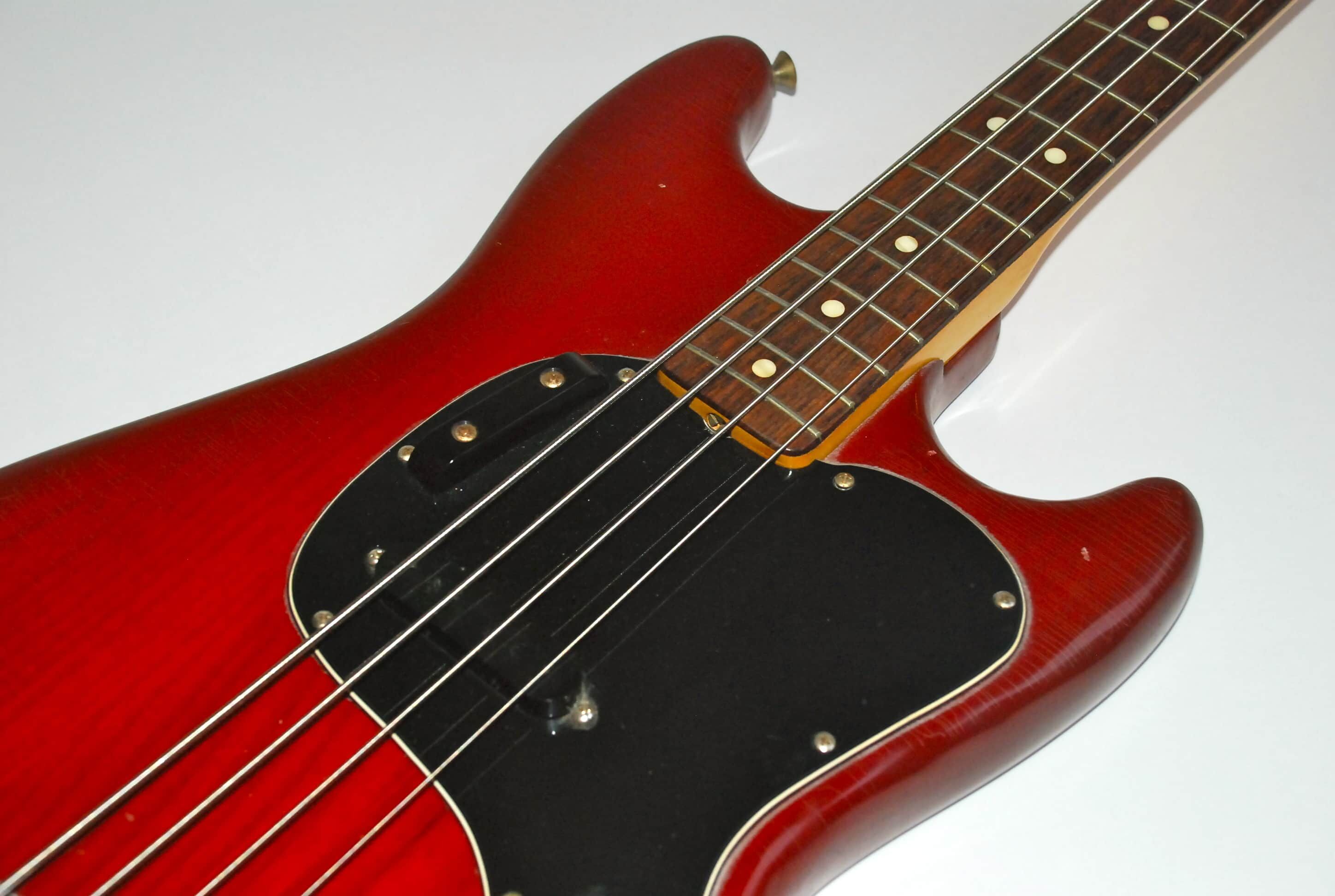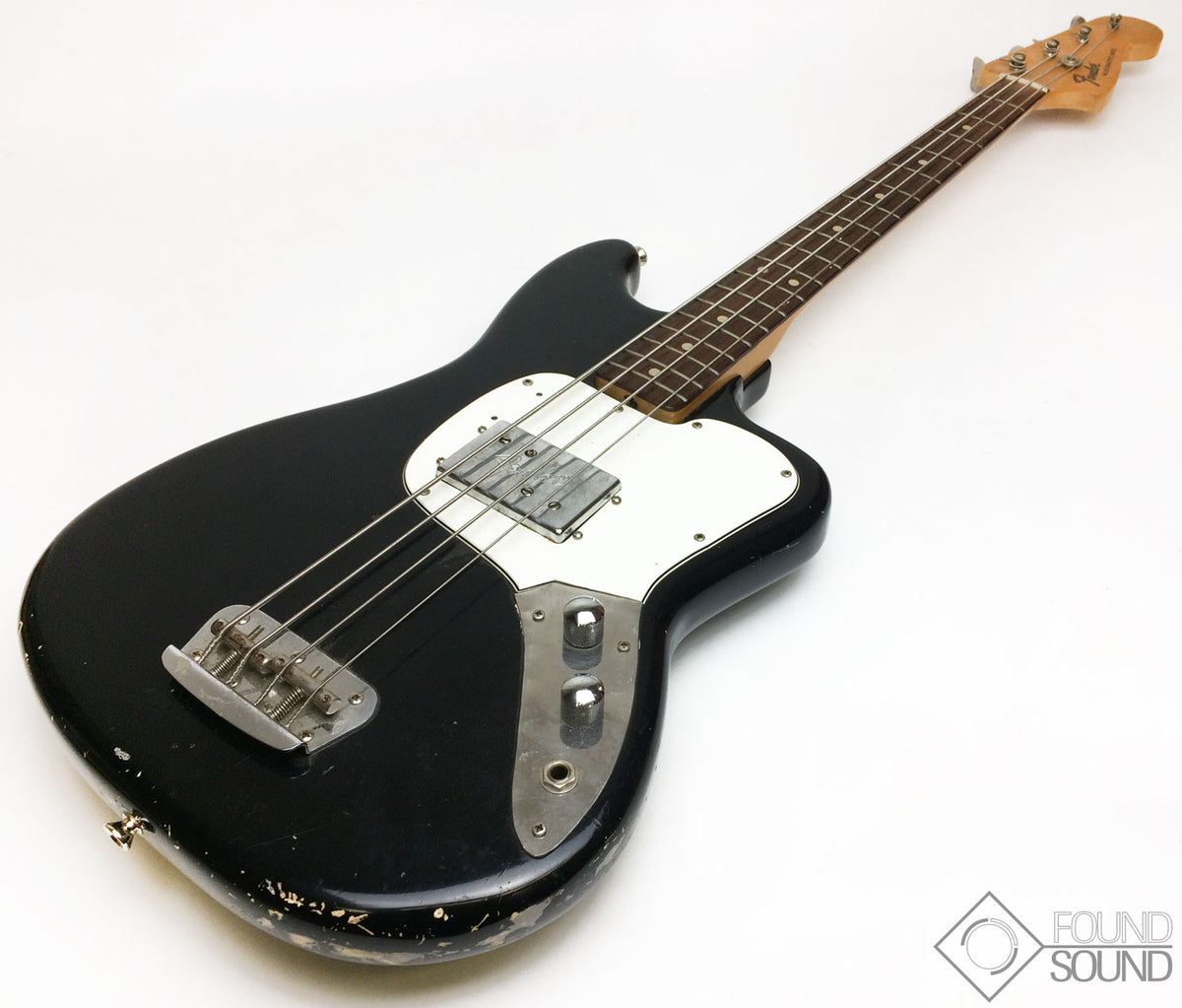

In 1963 the sunburst finish was discontinued and the guitars were available in white with brown plastic pick guards.īig changes occurred in late 1964 when the Duo-Sonic and Musicmaster were redesigned. The anodized aluminum pickguard was changed to a plastic one with shielding under the potentiometers.ġ959 was also the year that the Musicmaster and Duo-Sonic came in Sunburst which replaced Desert Sand. Within a year Fender changed this to the veneer style rosewood fret board. This model went unchanged until later in 1959 when a rosewood slab fret board was added to the maple neck. The suggested retail price at the time for the Duo-Sonic was $149.50.

The original run of these guitars came in only one color that Fender called Desert Sand.
Fender musicmaster bass serial number#
The serial number was stamped on the chrome neck plate. The initial models of each instrument came with an anodized aluminum pickguard done in a gold colour. This bridge was fastened directly to the body and it came with a bridge cover, which generally was taken off the guitar. The middle position on the Duo-Sonic placed the single coil pickups in series, thus acting like a humbucking pickup.īoth guitars had adjustable bridges which had 3 sections, much like the older Telecaster bridges, with each section doing duty for two strings. The Duo-Sonic added an additional pickup, without a slant, in the bridge position and a 3-way selector switch on the lower horn. The Musicmaster featured just one single-coil slanted pickup in the neck position. Both instruments came with a single volume and tone control. The guitars double cutaway slab body was made of either an ash or alder and featured shorter horns than those on a Stratocaster. The tuning machines came with less costly plastic buttons instead of metal ones found on the strat and tele. Both guitars featured a 22 1/2” scale bolt on, soft V style maple neck with a maple fret board. The 3/4 sized Fender Musicmaster and Duo-Sonic guitar guitars were both offered in the spring of 1956. The introduction of this guitar coincided with the year Elvis Presley became popular, which caused an increased interest in the guitar.īy 1956 Leo Fender thought it might be a good idea to introduce a student model to the Fender line up, which would have a shorter scale for small hands and also had a reduced price point.ġ956 Fender Musicmaster and Duo-Sonic Guitars Moving forward to 1954, Fender introduced the Stratocaster. So the word "Broadcaster" was cut off of subsequent headstock decals.īy the summer of 1951 the guitar was renamed the Telecaster. In the fall of that year Fender added an additional pickup and called that guitar the Broadcaster, which didn’t last long as Gretsch had trademarked that name for their drum sets. This "Spanish-style" electric guitar was made in the style of Leo Fender’s lap steel guitars, with a single slanted pickup placed right next to the bridge and saddles. Having said this, there are a lot worse guitars out there, and as well as being historically important, the 1820 bass can certainly provide the goods when required.Fender introduced their solid body electric guitar, the Esquire, as early as 1950. Over the course of the 70s, the Japanese output improved dramatically, and in many ways these early 70s models are a low point for the brand. These new Epiphones were based on existing Matsumoku guitars, sharing body shapes, and hardware, but the Epiphone line was somewhat upgraded, with inlaid logos and a 2x2 peghead configuration. The Matsumoku factory had been producing guitars for export for some time, but the 1820 bass (alongside a number of guitar models and the 5120 electric acoustic bass) were the first Epiphone models to be made there. By the end of the 1960s, a decision had been made to move Epiphone guitar production from the USA (at the Kalamazoo plant where Gibson guitars were made), to Matsumoto in Japan, creating a line of guitars and basses significantly less expensive than the USA-built models (actually less than half the price).


 0 kommentar(er)
0 kommentar(er)
